Option 2: AI Generated Art
I chose this option as I’ve always been fascinated by science fiction and the ways in which life imitates art through venues like sci-fi.
I’ve seen AI generated art before, and saw that human faces were the most difficult thing for the programs to ‘draw’.
When I went to Craiyon, I input two prompts.
The first prompt was “Horse playing a piano”
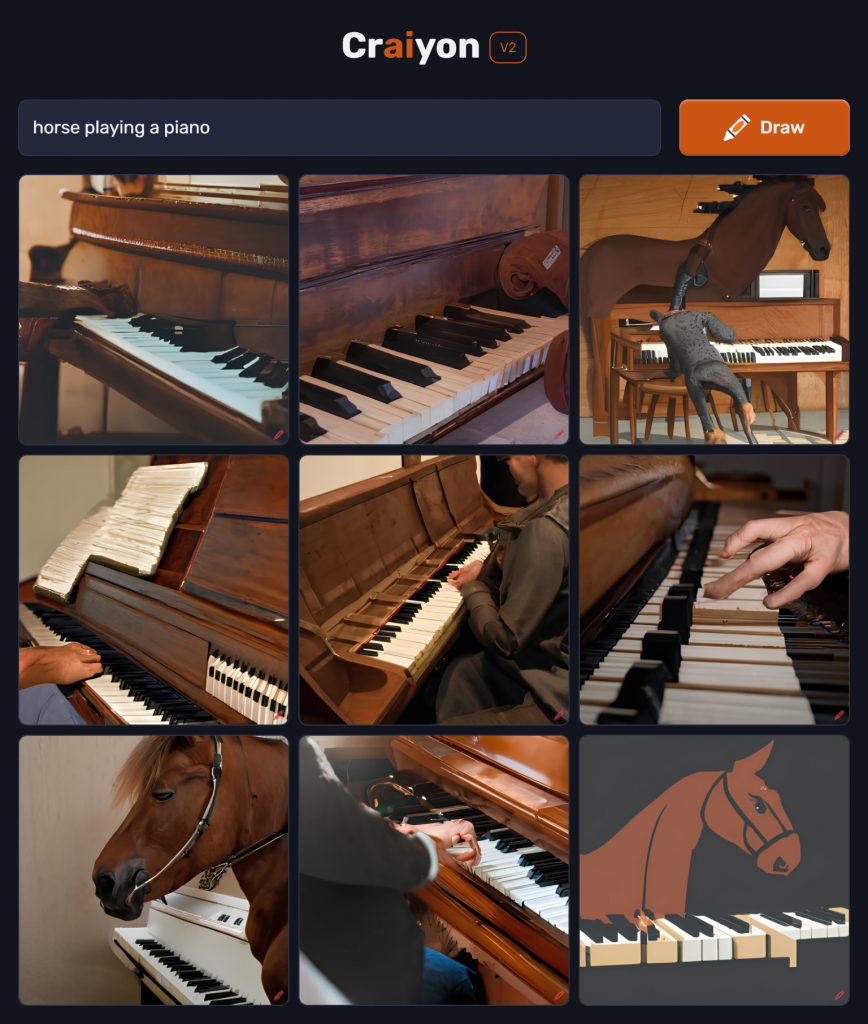
This image is not at all what I expected. I pictured a horse, sitting on a piano stool, literally with a hoof on the keyboard. What I got was horses and pianos, put into the same picture, superimposed on each other. Some of the images, like the first one in the upper left corner, are partly there with the image I wanted, but the others are not really depicting the topic of the picture I wanted.
I tried a Boolean search, “horse+playing+piano” to see if I would get something closer to what I wanted.
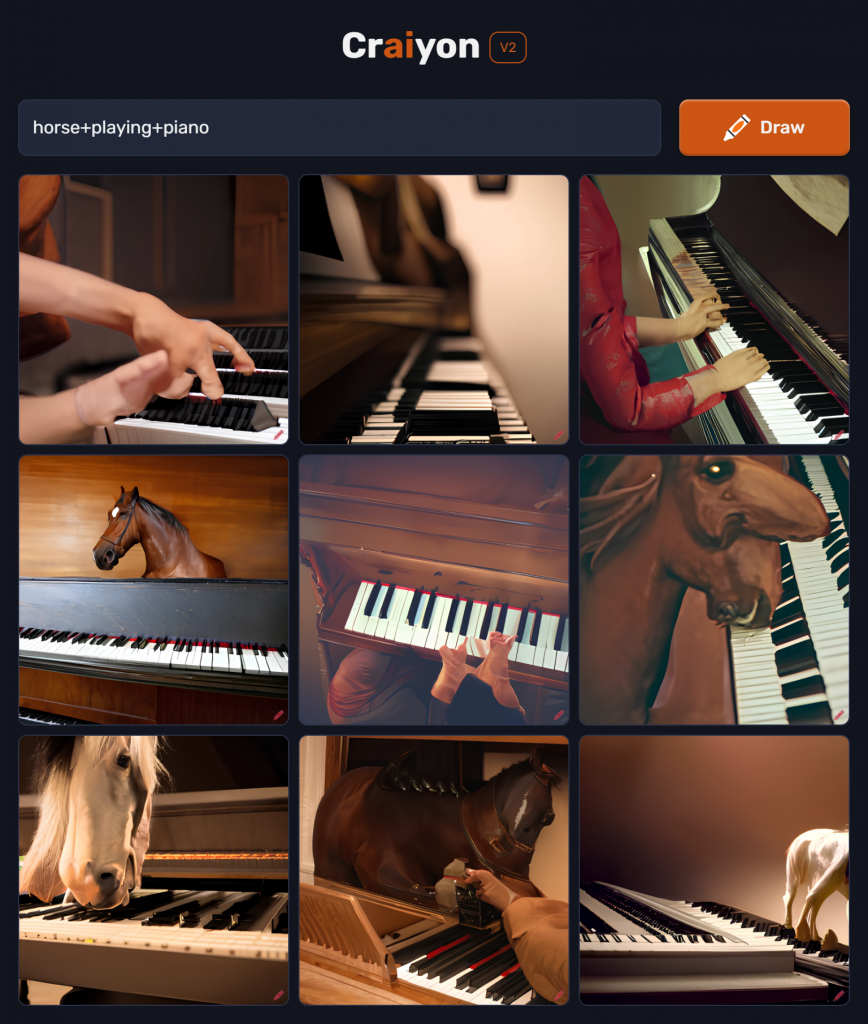
Using this search term, I got a little closer, particularly the bottom left picture of the two horses licking the piano keyboard. This could be a picture of grazing horses superimposed on a piano keyboard, as they’d have to be standing on top of the piano from that angle…But it is closer to the image I had in mind. Even the middle one on the right is much closer, though seems a bit distorted. It is at least a painting, rather than images put into the same picture.
The next prompt was “Beautiful flowers in a field”. I was curious to see what the computer would interpret as ‘beautiful’.
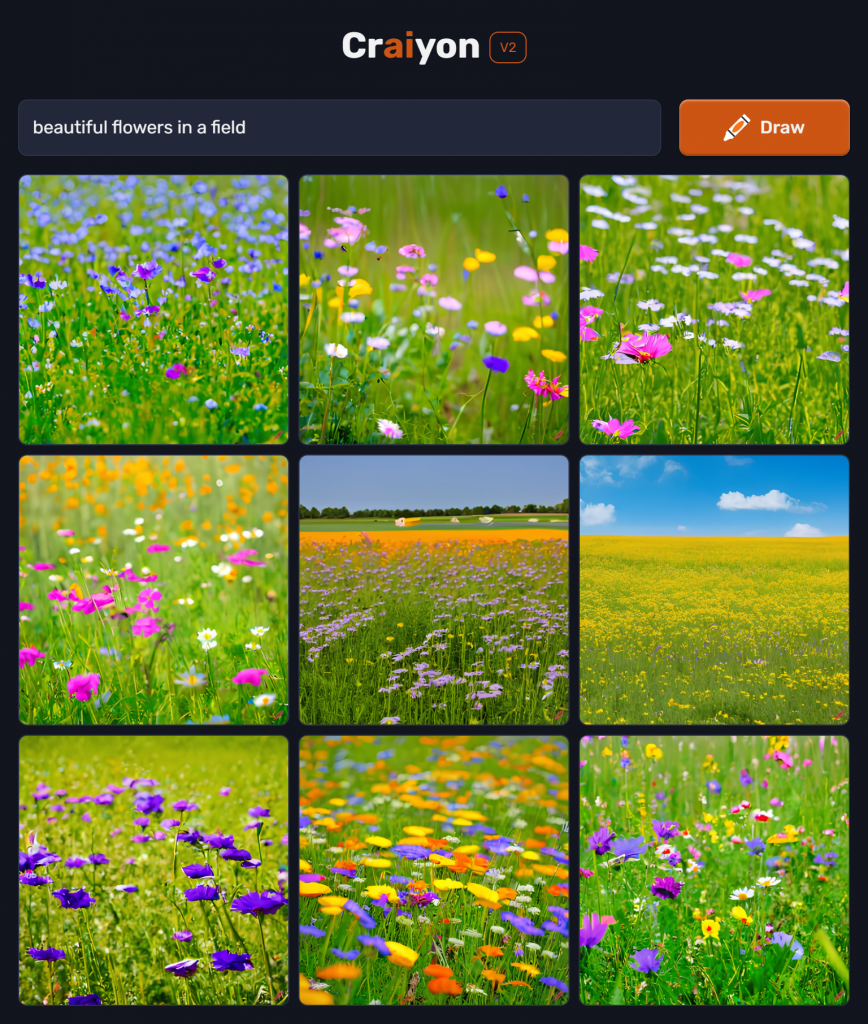
This image is basically a Google search of colourful wildflowers in a field. I wonder if the term ‘beautiful’ was pulled from many of the titles on the internet of pictures of flowers. So the computer took this as an interpretation of the keyword beautiful. This just seems like a Google Image search that I could have done myself. Which I did below.
I did a Google Image search using the same prompt and got very similar images:
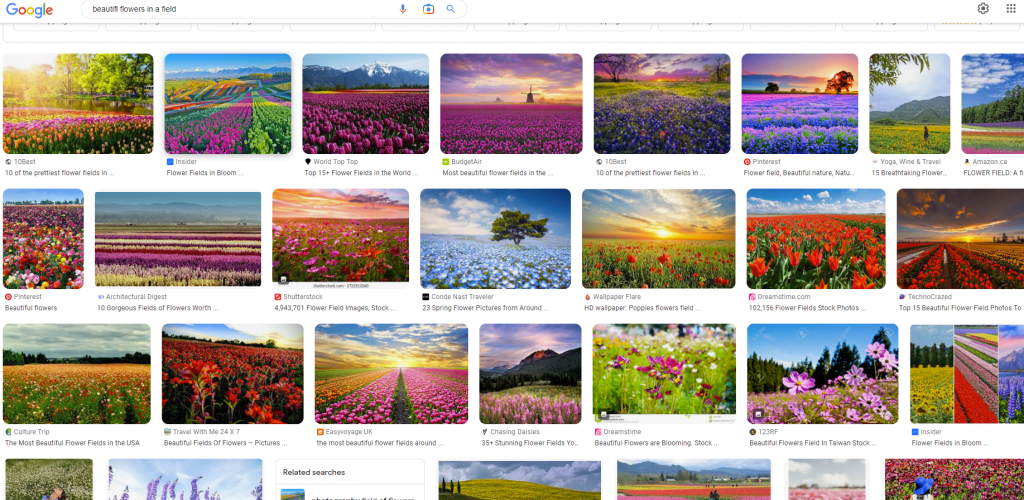
I then looked at different AI generated art programs using the same prompt as ‘horse playing piano’, in Night Cafe and Hot Pot.ai. These seem to be just images, gathered from the web, of the keywords I used, like “horse” and “piano”, or “flowers” and “field”, just superimposing the images in the same frame in some way. This seems like the same process that Craiyon used.
Night Cafe resulted in this:
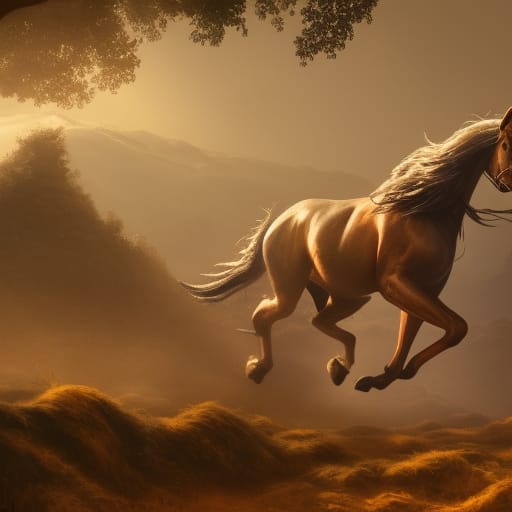
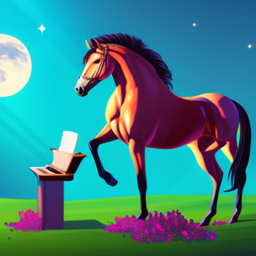
This is from Hot Pot.ai. More of a horse and a piano painting, but not really the horse playing a piano. The piano is even turned away from the horse, like in the other pictures, so it’s basically just sitting there, and not making a lot of sense in the context of the picture. This is one huge difference about human vs machine thinking – contextual factors and inference based on those factors.
I’ve been thinking about this topic of AI generated ‘art’ and the podcasts speaking about AI being more about detecting patterns from large amounts of data (mostly historical data) and collating it into something like a graph, percentage or rate.
Why does a computer want to paint/make a picture? It doesn’t. It was told to. The only motivation is from the user.
Why does an elephant want to paint a picture? We don’t really know why, but there has to be a motivation to do so (through training, whether positive or negatively enforced, or just wanting to please their handler), or the elephant wouldn’t do it. You can see that all three elephants in this video painted different pictures. Maybe because they were trained to do so from different handlers, but the question remains – is this the same as human learning or more akin to machine learning?
Training/education vs machine learning is food for debate, certainly. It also got me thinking about art and music and how these, like other forms of art, both express and evoke emotion. I looked at whether music could be generated through AI and what the difference might be. I did find two videos that demonstrate the contrast. The first one is a computer generated piece of music based on Chopin (the video creator didn’t want his video embedded, so I just have the link). https://youtu.be/iDFQ4EyxErk
Then you can listen at this video from a (very talented) person, about their take on several classical musicians at a birthday party fighting over the last piece of cake. Both are interpreting various styles of classical composers. So, what would the difference be?
Can you hear the difference between the computer generated piece and the musician generated piece? What are your thoughts?
What does this have to do with algorithms? As Dr. O’Neil reiterates over and over, the algorithm is only as good as the data that is input into it. How was the algorithm designed? Why? What is it supposed to do? These, and many other questions about use, motivation and consequences of the algorithm must be asked to have them truly work the way we want them to.
References
Box, S. (2014, February 1). An elephant paints a self-portrait with his trunk [Video]. YouTube. https://www.youtube.com/watch?v=KAkKSQXgZUA&feature=youtu.be
Google, T. A. (2016, November 2). Weapons of math destruction | Cathy O’Neil | talks at Google [Video]. YouTube. https://www.youtube.com/watch?v=TQHs8SA1qpk&feature=youtu.be
Ma, N. (2022, October 26). Happy Birthday but 13 classical composers are fighting over the last slice of cake [Video]. YouTube. https://www.youtube.com/watch?v=utvhon1epgo&feature=youtu.be
Thinker, D. (2019, August 13). Chopin music generated with AI [Video]. YouTube. https://www.youtube.com/watch?v=iDFQ4EyxErk&feature=youtu.be
